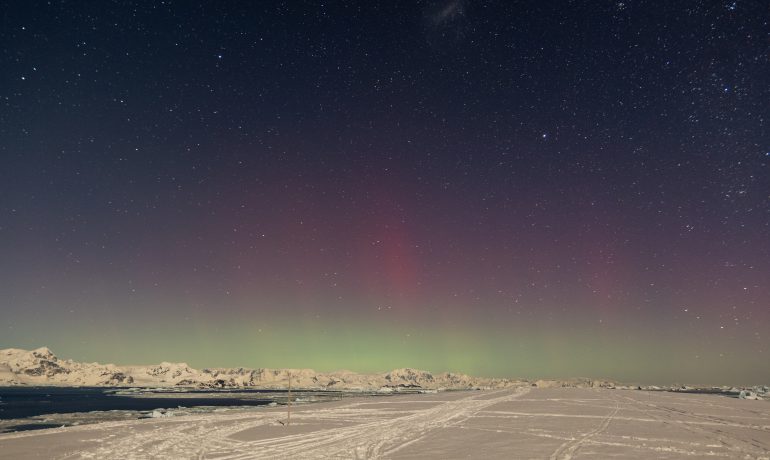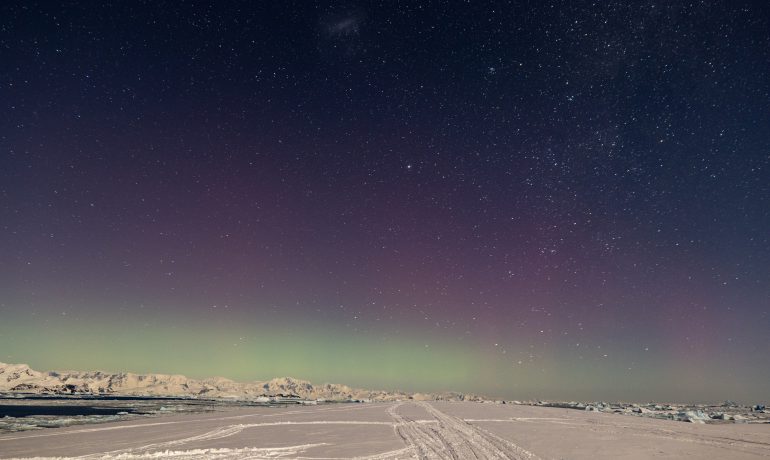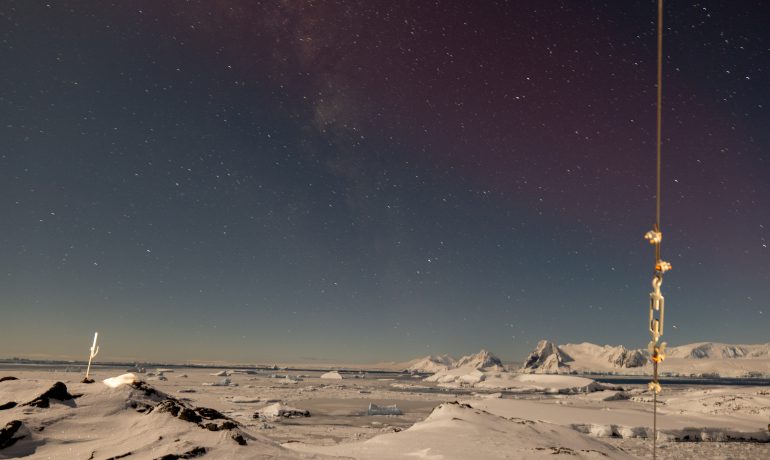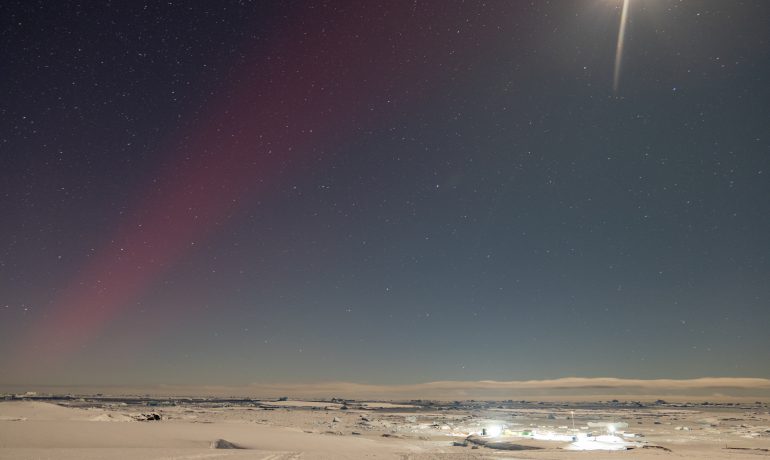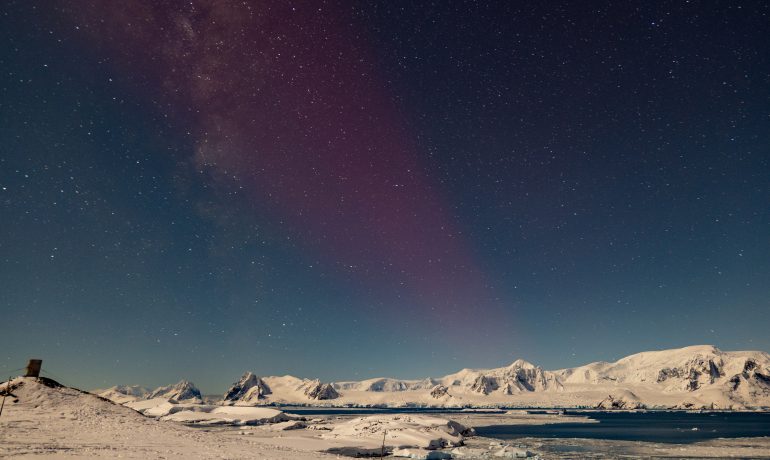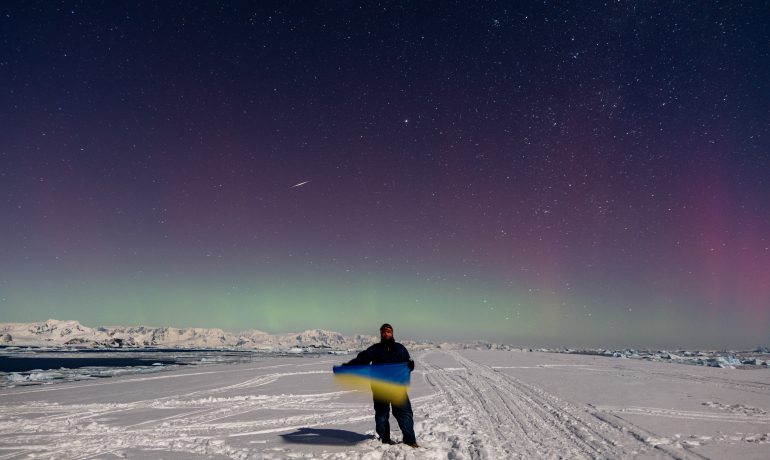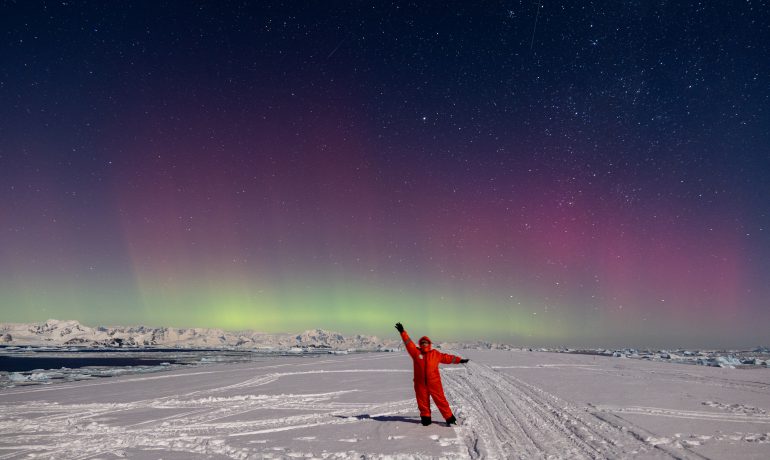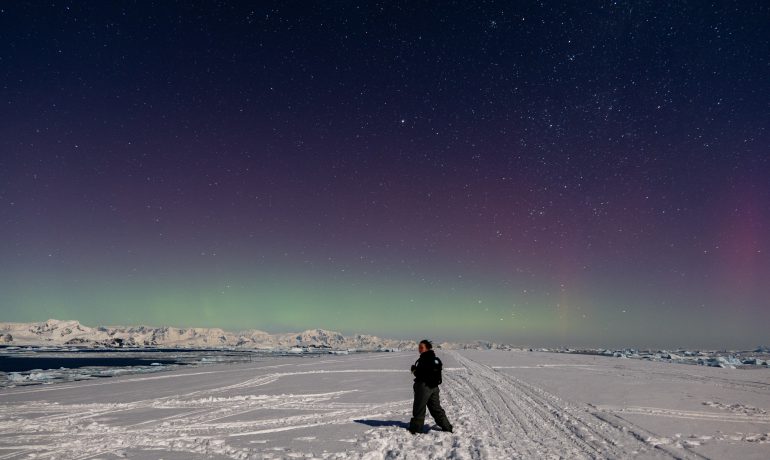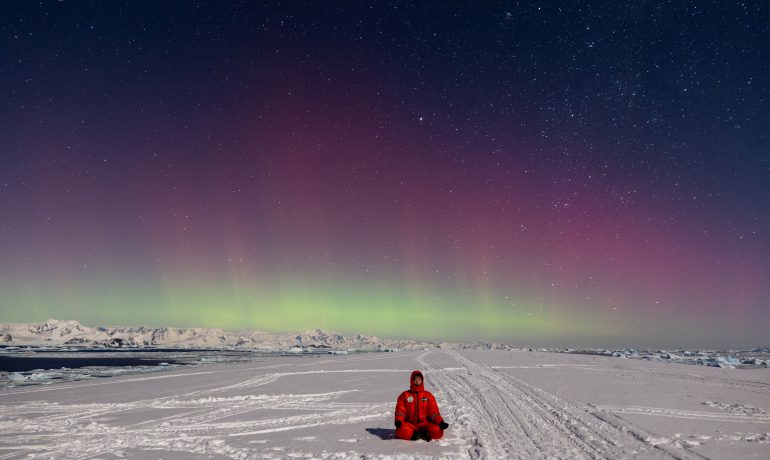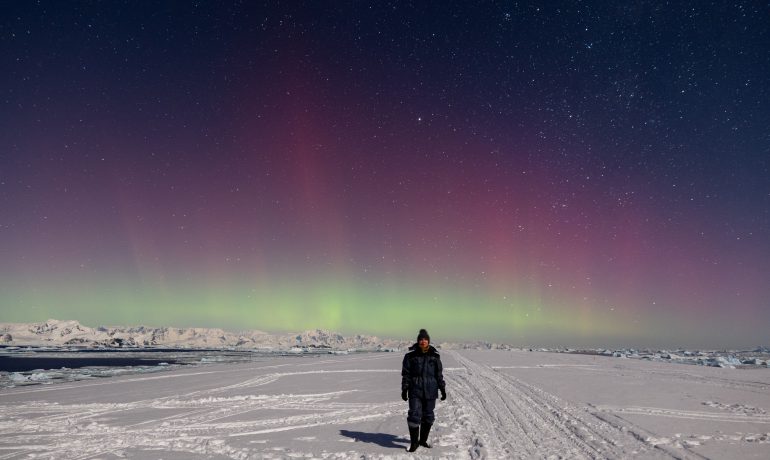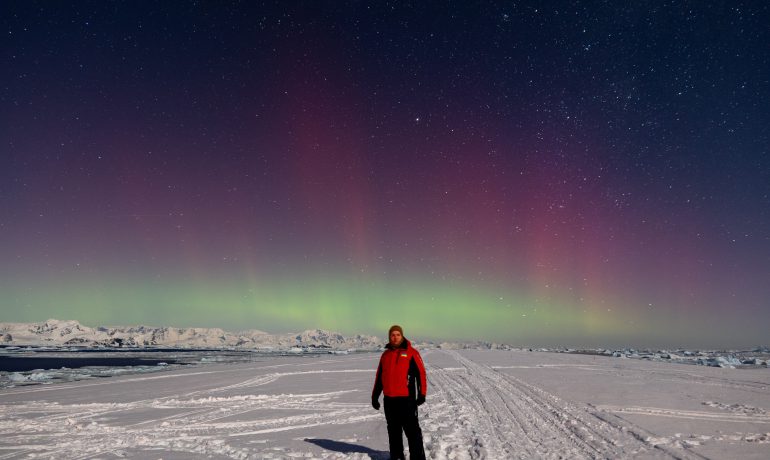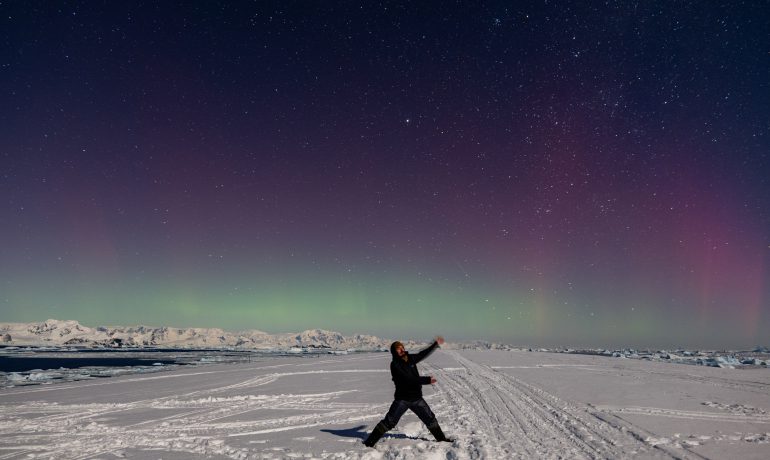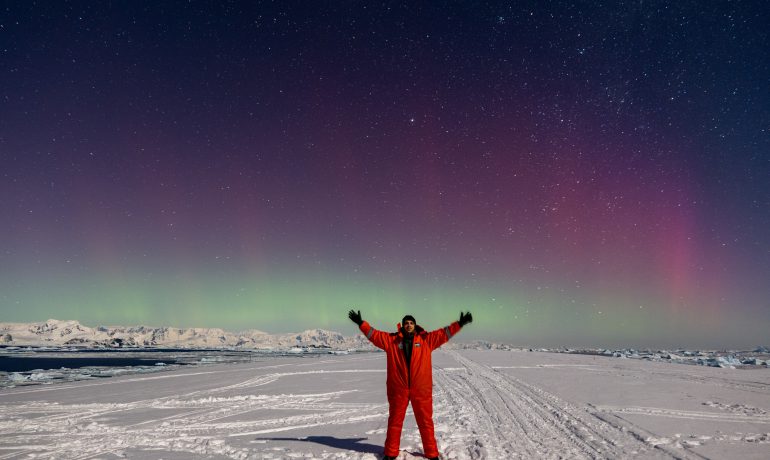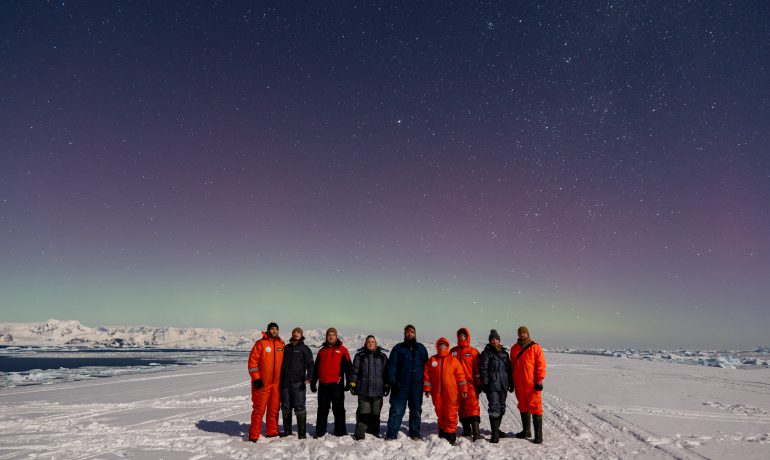Ukrainian polar explorers managed to record a unique phenomenon – the southern lights or aurora australis. It can be seen extremely rare near Vernadsky station.
There are several reasons for this. First, this area is located quite far from the Earth’s south magnetic pole. Secondly, it is always very cloudy here.
“ In order the aurora be visible near Vernadsky, strong perturbations of the Earth’s magnetic field must occur. This does not happen often. We use special devices to register such events in our geomagnetic observatory – by the way, it is currently one of the best in Antarctica. However, to see the glow with your own eyes and record it in a photo is a great luck, in my eight winters this happened almost for the first time. Because in most cases, when the devices show significant changes in the magnetic field, either the sky is covered with clouds, or it is summer, when it is light almost all the time,” explains Yurii Otruba, geophysicist of the 29th UAE.
Now an exceptional coincidence of necessary events has occurred:
- It is winter in Antarctica, so it is dark most of the day at Vernadsky;
- frosty weather and clear skies in the area of the station for several weeks;
- our geomagnetic observatory’s devices recorded a magnetic storm of K-8 level according to the Barthel index (it describes the deviation of the Earth’s magnetic field from the norm over a three-hour interval and can take values from 0 to 9).
At the same time, polar explorers note that the aurora was not bright – it was discovered thanks to… a camera.
“To the eye it looked like a light white haze, with a slight pink tint. But when we took a picture of this haze, we realized that it was aurora; green and purple colors appeared in the photo”, – says Anna Soina, geophysicist of the 29th UAE.
The magnetic storm and southern lights were recorded on the night of August 12, when the northern lights were observed in some regions of Ukraine.
Earlier we reported that during strong magnetic storms, aurorae can be seen where they are not usually observed.
Magnetic storms are associated with coronal mass ejections from the Sun, when a huge plasma flows with a “frozen” magnetic field moves towards the Earth. The interaction of the Sun’s magnetic field and the Earth’s magnetic field is what causes the precipitation of charged particles into the upper layers of the atmosphere, which we see as aurora.
Magnetometric research is one of the main studies at Akademik Vernadsky station and has been going on here for 70 years.
Photo: Oleksandr Matsibura.


